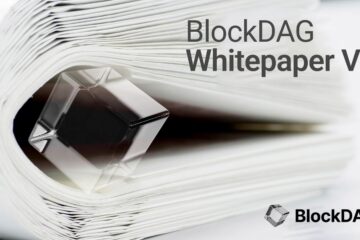A wave of new Layer-1, Layer-2, DeFi such MegaETH, Monad.. are preparing to launch their tokens.
Among the hundreds of projects currently in testnet or with announced TGE plans, a few stand out thanks to their strong user traction and impressive fundraising performance.
This article highlights the 10 most notable projects, selected based on two key criteria: real user engagement and the amount of capital successfully raised.


Top 10 Best Projects Before TGE
Polymarket
Polymarket is one of the most noteworthy upcoming projects, functioning as a decentralized prediction market where users can wager on real-world event outcomes. The platform has quickly gained over one million users, thanks to its transparency, intuitive interface, and high practical utility.
With over $70 million in funding from prominent backers like General Catalyst, Peter Thiel, and Balaji Srinivasan, Polymarket is seen as a potential input data layer for future DeFi protocols. As a decentralized prediction model, it could also serve as an “oracle” layer within the broader Web3 ecosystem.


Source: Dune
Farcaster
Farcaster is a decentralized social networking protocol that is gaining significant attention for its open architecture and the ability to let anyone build social apps on top of its infrastructure. Unlike centralized Web2 platforms, Farcaster stores all interaction data on-chain, ensuring user data ownership.
The project has raised approximately $150 million and currently has over 350,000 active accounts. One of Farcaster’s standout features is “frames,” which allows users to interact directly with content from other apps without leaving the platform.
Recently, the project’s founders – Dan Romero, have hinted at potential airdrop farming mechanisms, such as creating frames, daily engagement, and building applications using the Farcaster protocol.
Given its current growth momentum, Farcaster is widely expected to launch a token in 2025, likely accompanied by a major airdrop campaign for active contributors.


MetaMask
MetaMask, the decentralized wallet developed by ConsenSys, is currently one of the most widely used applications in the Web3 space, boasting over 30 million monthly active users. Thanks to its browser-native integration and multi-chain support, MetaMask serves as the primary gateway for millions of users entering the world of DeFi and NFTs.
Although MetaMask has not yet launched a token, the development team has hinted at a potential retroactive airdrop. With over $200 million in funding, the question is no longer if MetaMask will release a token, but when.


Source: Dune
Monad
Monad is an emerging Layer-1 blockchain aiming to compete directly with Ethereum by adopting a parallelized EVM architecture, which allows for faster and more cost-efficient transaction processing. What sets Monad apart is its ability to execute transactions in parallel, unlike Ethereum’s traditional sequential model.
With over $225 million in funding from major investors such as Polychain and Paradigm, Monad has launched its testnet and attracted significant community participation through initiatives like the Monad2048 game. Its focus on community building prior to token launch reflects a long-term strategy, and the project is highly regarded for its TGE potential in 2025.


MegaETH
MegaETH is a new Layer-2 network on Ethereum, designed for parallel processing and built with high performance in mind. The project gained significant attention in the community after announcing the completion of a $20 million seed funding round in June 2024.
The round was led by Dragonfly Capital, with participation from funds such as Figment Capital, Robot Ventures, Big Brain Holdings, and prominent angel investors including Vitalik Buterin (Ethereum co-founder) and Joseph Lubin (ConsenSys CEO).
MegaETH’s roadmap includes a public testnet launch in early fall 2025 and a mainnet release by the end of 2025. Upon mainnet launch, MegaETH plans to introduce a native token, which will be used for staking, ecosystem rewards, and governance through a DAO.
Read more: MegaETH Airdrop Guide: Earn the Exclusive Airdrop Distribution


Karak
Karak is a project operating in the emerging field of restaking, competing directly with EigenLayer – the current leader in this sector. Restaking is a novel trend allowing users to leverage staked assets to participate in additional services, aiming to maximize returns.
Having raised approximately $50 million, Karak has drawn attention due to its diverse range of AVS offerings and active development community. With attractive tokenomics and strong real-world demand, Karak is poised to become one of the most significant restaking tokens to launch this year.


Succinct
Succinct is developing a ZK verifier service as a plug-in, allowing easy integration into any blockchain. This solution aims to simplify the verification process using zero-knowledge proofs – a critical component in high-security applications and rollups.
Backed by over $55 million from prominent investors like Paradigm and Robot Ventures, Succinct positions itself as an infrastructure layer for the zk field, similar to what Chainlink offers for data oracles. If it launches a token, Succinct could significantly expand through a model that incentivizes usage and verifier staking.
OpenSea
OpenSea, the oldest and largest NFT marketplace, has raised over $425 million and was a symbol of the NFT wave during 2021–2022. Despite facing strong competition from platforms such as Blur and Magic Eden, OpenSea continues to maintain high trading volumes and a stable user base.
Launching a native token could trigger a new growth wave for OpenSea, especially as the NFT market enters a recovery cycle. If implemented with a fair distribution model like a retroactive airdrop, OpenSea’s token could become a significant catalyst for the entire NFT ecosystem.


Linea
ConsenSys, the company behind MetaMask, developed Linea as a Layer-2 zkEVM solution. Linea aims to combine the security of ZK Rollups with EVM compatibility and is actively testing its network on both the testnet and mainnet through campaigns like Linea Voyage.
Although Linea has confirmed its token launch, the team has repeatedly delayed the actual deployment. However, this hasn’t dampened community expectations, especially given that the platform has attracted millions of test users and accumulated significant engagement through clearly structured retroactive campaigns.
With its substantial user base and strong backing from the ConsenSys ecosystem, the likelihood of Linea conducting a retroactive airdrop remains very high. This presents a significant opportunity for early adopters, especially those who have actively contributed through test campaigns from early 2024 until now.
Even though there’s no final official confirmation regarding the exact timing of the token launch, given the precedents set by projects like Arbitrum and Optimism, the potential for a retroactive airdrop from Linea remains strong. This certainly offers an attractive opportunity for users actively engaging early with the ecosystem.


GiveRep
GiveRep is an emerging SocialFi platform built on the Sui blockchain, designed to transform your social media engagement into measurable on-chain reputation points called $REP. By interacting on X with Web3-related content, users can earn $REP points, which may qualify them for future airdrops and other rewards.
In addition to the 10 projects highlighted above, other initiatives such as Somnia, Lens Chain, Linera, Mitosis, Abstract, and more also deserve attention due to their active development efforts and the significant potential of their ecosystems.
Read more: Trading with Free Crypto Signals in Evening Trader Channel
 Bitcoin
Bitcoin  Ethereum
Ethereum  Tether
Tether  XRP
XRP  USDC
USDC  TRON
TRON  Lido Staked Ether
Lido Staked Ether  Dogecoin
Dogecoin  Figure Heloc
Figure Heloc  Cardano
Cardano  WhiteBIT Coin
WhiteBIT Coin  Bitcoin Cash
Bitcoin Cash  Wrapped stETH
Wrapped stETH  Wrapped Bitcoin
Wrapped Bitcoin  USDS
USDS  Wrapped eETH
Wrapped eETH  Binance Bridged USDT (BNB Smart Chain)
Binance Bridged USDT (BNB Smart Chain)  Chainlink
Chainlink  Monero
Monero  LEO Token
LEO Token  WETH
WETH  Zcash
Zcash  Stellar
Stellar  Hyperliquid
Hyperliquid  Ethena USDe
Ethena USDe  Coinbase Wrapped BTC
Coinbase Wrapped BTC  Litecoin
Litecoin  Sui
Sui  Avalanche
Avalanche  Hedera
Hedera  sUSDS
sUSDS  Shiba Inu
Shiba Inu  USDT0
USDT0  Dai
Dai  Uniswap
Uniswap  PayPal USD
PayPal USD  Canton
Canton  Mantle
Mantle  Cronos
Cronos  World Liberty Financial
World Liberty Financial  Toncoin
Toncoin  Ethena Staked USDe
Ethena Staked USDe  Polkadot
Polkadot  USD1
USD1  Aave
Aave  Rain
Rain  Bitget Token
Bitget Token  MemeCore
MemeCore 


